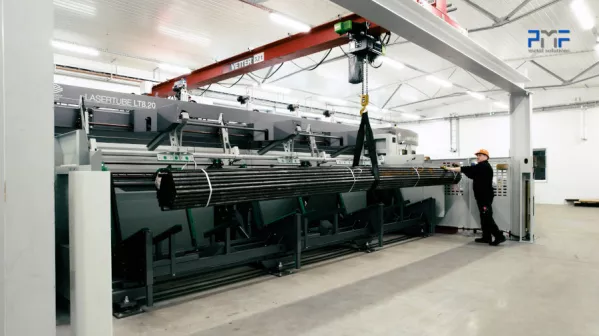+48 95 762 08 61
Modern technologies of metal working
Laser beam cutting
Laser cutting of tubes and sections
Robotic welding
Sheet metal bending
Laser beam cutting
Laser cutting of tubes and sections
Robotic welding
Sheet metal bending

There has been a common belief that laser cutters consume a significant amount of electrical energy during operation, and in the past, this was indeed the case. To power a 6 kW CO2 laser cutter, for example, as much as 100 kW of electricity was required. This was primarily due to the relatively low energy efficiency of CO2 lasers, which stood at around 7%.
The low efficiency of CO2 lasers is mainly a result of the physical limitations of this type of resonator and losses in the high-frequency generator used to power it. Such high losses also necessitate a highly efficient cooling system, which consumes a substantial amount of energy.
Subsequently, solid-state lasers emerged in the market. The most popular among them are disk lasers and fiber lasers. Both types of laser sources utilize laser diodes to pump the main resonator and offer significantly higher efficiency.
In the case of disk lasers, a 6 kW laser cutter would be content with just half the power of a CO2 laser. However, this still amounts to around 50 kW. It was only with the development of fiber lasers that a massive leap in efficiency occurred, allowing for a fourfold reduction in energy consumption.
Disk lasers are categorized as open-cavity lasers. This means that light in the resonator, after exiting the active medium (in this case, a special glass disk), passes through the boundary of different media - first from glass to air, and then, after reflection from a mirror, back from air to glass.
This process repeats multiple times, and with each passage through the boundary between media, some of the light scatters, and some is reflected. These losses, among other factors, limit the efficiency of such a resonator.
The latest generation of fiber lasers employs the all-in-glass technology. In these lasers, light resonates inside the active fiber, never leaving the glass until it reaches the laser head. The absence of boundary crossings eliminates losses, significantly increasing efficiency, reaching up to 50%.
Thanks to new technologies and innovative approaches to laser design, the metal industry now has the opportunity to use devices with significantly higher energy efficiency. This is not only beneficial for the environment but also reduces operational costs for businesses. Laser cutters have become more efficient while simultaneously reducing their energy demand. This new era in energy efficiency in the metal industry will undoubtedly contribute to the sector s development and competitiveness.